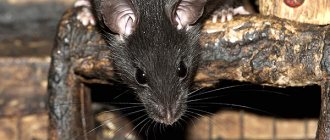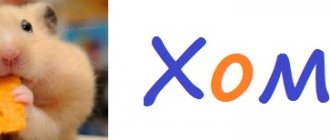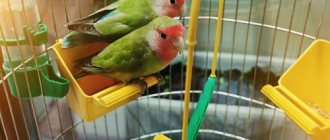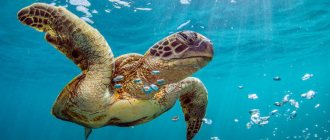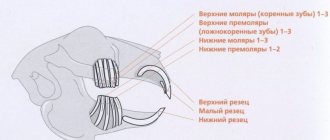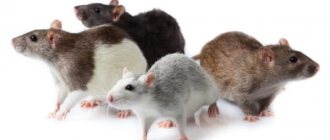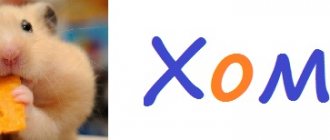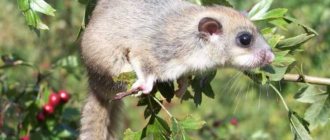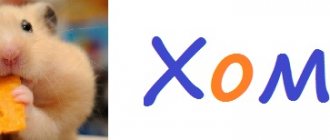- home
- Rat
- Good to know
03/15/2020 The structure of a rat is remarkable in that it is similar to a human. It was the physiological similarity between humans and rats that led to the participation of rodents in scientific experiments - when testing drugs being developed for humans, etc. Read about the structure of these little animals (external and internal), as well as interesting facts about rats in this article.
1.General anatomy of rodents
Although they are different, rodents share characteristics of other animal species, so you will learn parts of other species too.
Skeleton
Mammalian skeletons look fundamentally similar, but you can find even greater similarities between species. The most characteristic features of Georgians:
- Elongated, conical skull with huge incisors
- big head
- small breasts
- flexible spine
- Narrow hips
- Sharp, tenacious claws
- Short legs
- The hind legs are slightly larger than the front legs
- Ability to sit upright
- Very agile front paws
The skeleton of any animal can be simplified into standard forms that can be easily recreated in various poses. This is the so-called artistic skeleton, which gives a clear understanding of the structure of the case, without drawing bones and other unnecessary things. To learn more about using a simplified skeleton, check out my pose tutorial.
Body
Fortunately for us, the rodent's body is covered with quite loose skin, which hides the outlines of the muscles. When you add hair to them, it becomes obvious that you don't need to go into training the muscle structure of these animals. However, muscles determine the shape of the body, so in any case, there are still structures that need to be remembered.
Head
Since all rodents have similar skulls, their heads can be drawn in the same way. Now we focus on the similarities, and we will talk about the individual features of each of the species later. I will show you three angles at the same time so that you can experience different perspectives.
Step 1
Start with a large ball for the brain and two small balls for the upper jaw.
Step 2
Add another ball in front of the upper jaw to create the lower jaw.
Step 3
Add details such as nose, eyes and ears. The eyes are large and oval and should be located on the sides of the head.
Step 4
Use the guide lines we drew earlier to complete the drawing.
Eyes
The eyes of small rodents are dark and oval. If you are painting on a small canvas, you can easily depict them as two black ovals with white dots on them. On a larger canvas you will need to add more details:
The eyes can be drawn as two large black beads.
Paws
Different species of rodents may have different numbers of toes, but in general their paws are similar. Because rodents have little or no fur, their toes and curves are clearly visible. Many rodents have 4 toes on their front paws and 5 on their hind paws.
Nose
The nose of a small rodent is very small, so it is unlikely that you need to draw it in detail. The most important thing you will need to remember is that there is a small hump over the nose that conveys the correct appearance of the rodent.
Characteristics of a Rat Skeleton
The rat skeleton is formed from 264 bones of various parameters, not counting 74 sesamoid bones and 16 teeth. Different parts of the skeletal system include different numbers of bones:
- 60 in the spinal column;
- 26 in the ribs;
- 6 in the basin, etc.
The rat skeleton consists of bone and cartilaginous parts. The animal’s skull includes paired and unpaired bones. It consists of two parts:
- Facial;
- cerebral.
The animal's spine consists of three sections:
- Cervical;
- chest;
- sacral
According to scientists, if you straighten a rat's spine, the animal will appear as a miniature copy of a human, no different in structure.
Mouse
Body Features
- Slender body
- The tail is longer than the head with the body
- The tail is covered with husks and hairs
- Large head compared to body
- “Bare” feet covered with light, fine hairs
Color
Wild mice (field mice) are usually gray or brown in color. For house mice, you can use almost any color scheme.
Head
- Pointed muzzle
- large, round ears without fur
- Large eyes in relation to the head
The cat's brain in the evolution of the cat family
In terms of its dimensions, a cat is a miniature creature, the exception, of course, is the Maine Coon breed. However, it is wrong to think that if an animal is smaller than a person, it means it is stupider and less intellectually developed than a person. Scientists have proven that the mass of this biological computer does not affect intelligence at all. In addition, its structure has existed without any significant changes for tens of millions of years. Even the first representatives of the cat family on Earth had exactly the same structure of this organ. They were replaced by the ancestors of lions, tigers, panthers, etc. And then these representatives themselves. It is worth noting that the filling of a lion’s skull in its structure is an exact copy of the filling of the skull of any domestic or street cat. The differences are only due to the habitat and body mass. The greater the body weight, the greater the functions of the trunk that need to be controlled, the more space in the skull for “gray matter”
Rat
Body Features
- Stocky body
- Shorter tail
- The tail is covered with husks and fine, light hairs
- The head is proportional to the body
- "Bare feet" with fine, light hairs
Color
Natural colors for rats are gray, grayish-brown, and black. But you can also use a color scheme
Head
- Rounded muzzle
- Small ears without hair
- Small eyes in relation to the head
Notes
- Sokolov V. E.
Five-language dictionary of animal names. Mammals. Latin, Russian, English, German, French. / under the general editorship of academician. V. E. Sokolova. - M.: Rus. lang., 1984. - P. 136. - 10,000 copies. - OCLC.
- ↑ Sokolov V. E.
Systematics of mammals. Orders: lagomorphs, rodents. - M.: Higher School, 1977. - P. 29-39. — 494 p. — 20,000 copies. - ↑ Gromov I.M., Erbaeva M.A.
Mammals of the fauna of Russia and adjacent territories. Lagomorphs and rodents. - St. Petersburg, 1995. - P. 58-61. — 522 p. — 1000 copies. - Pavlinov I. Ya., Kruskop S. V., Varshavsky A. A., Borisenko A. V.
Terrestrial mammals of Russia. - M.: KMK, 2002. - P. 132-133. — 298 p. — ISBN 5-87317-094-0. - Nowak R., Paradiso J.
Walker's Mammals of the World. — 4th. - Baltimore: The Johns Hopkins University Press, 1983. - T. 1. - P. 493. - 1306 p. — ISBN 0-8018-2525-3. - Kemp TS
The origin and evolution of mammals. - NY: Oxford University Press, 2005. - P. 273-274. — 331 p. - (Accessed July 6, 2017).
- ↑ (inaccessible link). Retrieved April 24, 2013.
- Kiris I. B.
Experience of keeping a chinchilla in an enclosure // Sat. works of VNIIOZ. - Kirov, 1971. - Issue. 23. - pp. 49-91. - ↑
- Sherwin C. M. (2010). The Husbandry and Welfare of Non-traditional Laboratory Rodents. In UFAW Handbook on the Care and Management of Laboratory Animals, R. Hubrecht and J. Kirkwood (Eds). Wiley-Blackwell. Chapter 25, pp. 359-369.
- “A rat with a nose for landmines is doing its bit for humanity” Cited as coming from the New York Times in the article.
- (unavailable link). Retrieved April 24, 2013.
Gray squirrel
Body Features
- Slender body
- Bent paws
- Strong hindquarters
- Long, fluffy, slightly flat tail
- Small head compared to body
Color
Gray squirrels are predominantly gray in color with white or brown shading on the head and sides. The lower part is white.
Head
- Rounded head
- Small ears
- Large eyes in relation to the head
Body parts and body systems
Scull . The ratio of the sizes of the cat's head and body shows that cats have the smallest skull among domestic animals. There are 11 bones in the skull, and 13 in the facial part.
The following bones are distinguished in the skull:
- parietal,
- interparietal,
- frontal,
- occipital
They are flat and durable. Thus, a cat’s skull protects its brain from damage.
Muscles. There are more than 500 muscles in the cat's muscular system, which provide the animal with such amazing grace of movements. The elasticity of the muscles and their complex structure allows the cat to run fast, jump high and to great lengths. Muscles consist of two parts that perform supporting and working functions at the same time. Each muscle also has nerve endings and blood vessels. In addition to its direct responsibility - ensuring movement - the muscles also maintain the correct position of the skeleton.
- digestive,
- respiratory,
- circulatory,
- sexual,
- urinary,
- lymphatic.
Let's get acquainted with the structure of the cat's organs in more detail.
Digestive system
Since cats are carnivores, they have an intestinal length of only 2.1 m, which is much shorter than that of herbivores. These include the pharynx, oral cavity, esophagus, stomach, small and large intestines, and rectum. The system performs complex functions. In addition to the mechanical (grinding of food) and chemical in the absorption of enzymes, nature also provides an incretory function, that is, the release of hormones for digestion.
Teeth are an important part of the digestive system, because they are responsible for the primary grinding of food. An adult cat has 14 teeth on the lower jaw and 16 on the upper jaw.
The food, already crushed and moistened with saliva, then enters the stomach through the esophagus. Next, three stages of processing occur:
- grinding,
- entry into the duodenum,
- division into components,
- assimilation.
Intestines. The small intestine absorbs enzymes and provides metabolism. The thick section includes the cecum, colon and rectum. Unlike the small intestine, there are almost no cells that secrete enzymes. The main purpose is to remove waste to the outside.
red squirrel
Body Features
- Slender body
- Bent paws
- Strong hindquarters
- Long, fluffy, slightly flat tail
- Small head compared to body
Color
The color varies depending on the species, but the skin is usually red, brown, or reddish-gray with a white underside.
Head
- Slightly pointed muzzle
- Pointed ears
- Large eyes compared to head.
Dimensions
Capybaras
The rodent order has a varied range of body sizes. One of the smallest rodents is the swamp hamster (Delanymys brooksi), common in the swamps and mountain forests of Africa. It weighs from 5 to 7 grams and has a length of 5 to 6 cm. The largest rodent is the capybara (Hydrochoerus hydrochaeris) from Central and South America, which weighs from 35 to 66 kg and has a height at the withers of 50 to 60 cm, and body length from 100 to 135 cm. Some extinct species were even larger, reaching the size of a black bear or a small rhinoceros. The largest rodent (Josephoartigasia monesi), lived about two to four million years ago, during the Pleistocene and Pliocene eras; According to some estimates, it was about 3 meters long and weighed almost 1000 kg.
Chipmunk
Body Features
- Small, slender body
- The head is proportional to the body
- Long, rather fluffy tail
Color
Chipmunks are primarily reddish-brown with white underparts and distinctive stripes on their backs.
Head
- Slightly pointed muzzle
- Small ears
- Very large eyes in proportion to the head
Taxonomy
Previously, rodents, together with lagomorphs, were united into one common order Glires. After this concept was completely abandoned for a long time, today biologists who support this classification are again appearing. Some even try to combine them with jumpers. However, such theses are controversial. Other researchers come to opposite results and see lagomorphs as signs of a completely different evolutionary line. As for the jumpers, the majority believes that they are not even representatives of the same superorder with rodents (superorder Euarchontoglires), being part of the superorder Afrotheria.
Classification
Traditionally, rodents are divided into three suborders: squirrel-like (Sciuromorpha), mouse-like (Myomorpha) and porcupine (Hystricomorpha). But recently it has become increasingly noticed that the taxonomy of rodents is much more complex.
The following classification of the detachment is widely known:
- Suborder squirrel-like (Sciuromorpha) Family Aplodontiidae
- Family of squirrels (Sciuridae), including the squirrel ( Sciurus
) and marmot (
Marmota
) - Dormouse family (Gliridae)
- Beaver family (Castoridae)
- Superfamily Dipodoidea Jerboa family (Dipodidae)
- Dormouse family (Platacanthomyidae)
- Long-legged family (Pedetidae)
- Infraorder Ctenodactylomorphi Family Ctenodactylidae
- Family Agoutiaceae (Dasyproctidae)
At the same time, squirrels constitute the most ancient suborder of rodents. Probably all the others, with the exception of the porcupines, split off from them during evolution. Porcupines are a particular subject of controversy. Some researchers believe that they should not be classified as rodents at all, but should be made into a separate order.
Alternative classification
Some taxonomists in the suborder Porcupines, instead of two infraorders, distinguish 3 superfamilies:
- Suborder Porcupines (Hystricomorpha) Superfamily Porcupines (Cavioidea) Family Agoutiaceae (Dasyproctidae)
- Capybara family (Hydrochoeridae)
- Pacarana family (Dinomyidae)
- Pig family (Caviidae)
- Family Octodontidae
- Chinchilla family (Chinchillidae)
- Family Diatomyidae
Hamster
Body Features
- Stocky body
- Proportional head
- Short tail
- Little paws
- Feet may be bare or furry
Color
The common Syrian hamster is light tan, but there are many other color variations for them.
Head
- Rounded muzzle
- Proportional eyes
- Small ears
Gerbil
Body Features
- "Hamster with a Long Tail"
- Proportional head
- Large hind legs
Color
Wild gerbils are usually yellowish-brown with a lighter shade on the underparts and tip of the tail. But at home there is quite a wide selection of shades.
Head
- Rounded muzzle
- Small ears without hair
- Large eyes in relation to the head
Use of drugs
Every dog owner needs to know how to properly give their pet the necessary medications to treat ailments. Some dog owners face difficulties when their dog does not want to take his medication. As a rule, adding drugs to food does not produce any results. The pet quickly learns to take away the tasty morsels, leaving the tablets uneaten. In order to facilitate the procedure for taking tablets and mixtures into the animal’s body, you should resort to some tricky techniques:
Use a syringe. In this case, it is necessary to pour the medicine into the mouth at the same time as the owner squeezes the dog’s jaws. This will prevent the animal from closing its jaws. Once the tablet or powder is on the tip of the tongue, the dog needs to hold its mouth tightly with your hands to prevent the medicine from falling back out. The sick animal must be kept in this way for several minutes until the product enters the esophagus. Powdery substances should be poured onto the dog’s tongue, and after a while, give him a drink of clean water. To force the dog to drink the mixture, you should throw the animal's head up, and then try to pour the liquid behind the jaw. Now all that remains is to wait until the pet reflexively swallows the medicinal product. Applying the products externally directly to the dog’s body does not cause much trouble. However, after applying the cream or gel, you must put a protective collar on the animal. This device will prevent the dog from licking the medicine from the body. Rectal and vaginal administration of drugs is carried out using suppositories and special enemas for animals. After successfully introducing the drug into the colon, it is necessary to press the tail against the anus for a while. Instilling drugs into the eyes is a complex procedure. It is advisable to do it together: one holds the dog’s muzzle, and the second should apply the medicine, while holding the dog’s eyelids open with one hand. If you need to inject a syringe with the drug under the skin of an animal, you need to buy a syringe with a thin and short needle at the pharmacy. For the medicine to work, you need to gather a fold near the withers with two fingers, and then insert the needle to a depth of 2 cm. Then you need to inject the liquid by slowly pressing the syringe plunger. Sometimes pet owners have to give intravenous injections to their pets themselves. For this procedure, it is necessary to find the small saphenous vein in the dog's lower leg. A tourniquet must be applied above the puncture site, tightly tightening the paw. Only after this can the vein be pierced with a needle. After this, the drug can be administered
It is very important to hold the animal’s paw during this procedure, otherwise it may be injured.
All other procedures, such as installation of IVs, intracavitary injections, injection of the drug into the heart muscle, blood transfusion, ultrasound of internal organs in dogs should only be performed by a qualified veterinarian.
Guinea pig
Body Features
- Very stocky, round body
- Very large head compared to the body
- No tail
- 4 toes on front paws and 3 on hind paws
- The neck is “merged” with the body
Color
In general, there is no typical color for guinea pigs, so you can come up with any color of your own. For spiritual simplicity, you can choose and paint it in a single color, brown or white, for example.
Head
- Rounded muzzle
- Floppy ears
- Proportional eyes
Human interaction
Rodents have accompanied humans throughout human history. Some of them served a person as a source of food, clothing and other materials, others destroyed his supplies and served as a carrier of diseases. Some species (house mouse, pasyuk) have become true synanthropes, spreading along with humans, using their homes and vehicles.
Pets
Many species of rodents are kept by humans as pets. The most common species are mice, rats, guinea pigs, hamsters, squirrels, and degus. The chinchilla is an exotic pet that requires a lot of care.
Source of fur
Many rodents have soft, pleasant-to-touch fur, but only a few of them (nutria, muskrats, squirrels, chinchillas) are commercially hunted. The Siberian chipmunk is of minor commercial importance.
In the research field
Mice, rats and guinea pigs serve as the object of scientific research experiments. The high rate of reproduction and ease of maintenance made these rodents suitable candidates for breeding pure laboratory breeds with desired characteristics. The practice of conducting experiments on animals (including rodents) is subject to constant criticism from animal welfare organizations.
Disease carriers
The deterioration of the quality of work on cleaning residential areas of garbage creates a food supply for rodents. Moscow, winter 2016/2017.
Rodents living in close proximity to humans, whether pets or wild animals, are carriers of diseases. For example, rodents are traditional sources of listeria infection. In addition, proteins in the urine or blood serum of rodents can cause allergies. Chipmunks are natural carriers of at least 8 pathogens of dangerous diseases, such as tick-borne encephalitis, rickettsiosis, toxoplasmosis, etc. Marmots are natural carriers of bubonic plague.
Agricultural pests
Rodents that feed on grain crops are serious pests, destroying both growing crops and already harvested crops. In Asia, rodents are one of the main factors limiting rice production.
Separately, it should be noted the damage caused by rodents to books and other paper products.
See also: Rat poison
Chinchilla
Body Features
- Stocky body
- Soft, fine fur.
- Medium length fluffy tail
- Large head compared to body
- 4 toes on all paws, with “shoots”
Color
Traditionally, chinchillas are gray with a lighter underpart and a darker back. They can also be black, beige or almost white.
Head
- Rounded muzzle
- Very large ears without hair
- Large eyes in relation to the head
- Very long, straight mustache
- "Sleepy Look"
How are the organs located inside the animal’s body?
The anatomy of the rat is well studied. The thoracic and abdominal regions of the animal are separated from each other by a diaphragm, under which a bright red liver is located. It partially obscures the pear-shaped stomach. To the left of the stomach is the oblong spleen.
Below these organs is a voluminous intestinal tract, covered with an omentum necessary for collecting animal fat. Behind the intestines, at the bottom of the abdominal cavity, there is a pair of bean-shaped kidneys. In rats they are asymmetrical - the left kidney is located deeper, as the stomach puts pressure on it.
The bladder is located in the lower abdomen of the animal. The ureters lead to it. In the same part of the body are the genital viscera:
- Males have testes;
- females have complex reproductive organs.
A peculiarity of the internal structure of rats is that they do not have a gallbladder. Bile flows from the liver through the duct directly into the duodenum.
The animal’s vascular system is the inferior vena cava, through which blood flows from the abdominal organs to the heart. The aorta runs nearby.
The heart, surrounded by large vessels, is located in the chest cavity. There is also a pair of pink lungs (the right one consists of four lobes, and the left one - of one). They are not attached to the chest, but hang freely on the bronchi. The esophagus is located deep in the sternum, playing the role of a connecting link between the stomach and pharynx.
Practical exercise - draw a picture!
Let's put the knowledge we have gained into practice.
Step 1
The biggest problem of all artists before starting work is not knowing where to start drawing. To avoid such awkwardness, simply sketch out an image of your idea on a piece of paper. Don't think about anatomy yet, just draw what you imagine.
Step 2
Use the sketch to draw the skeletal pose. Just look how easy it is to add volume to a drawing!
Step 3
Let's add some muscle. Remember - Muscles and final body shape may vary depending on the amount of fur.
Step 4
Let's add fingers. Using only two fingers as a basis, you can more conveniently and quickly complete the rest, following the rhythm.
Step 5
We draw the head, following the perspective.
Step 6
But now you can “revive” the picture using auxiliary lines.
Step 7
You can leave the sketch like this, or you can make a line out of it.
Digestive system
The cat's digestive system consists of:
- esophagus;
- stomach;
- small intestine;
- duodenum;
- jejunum;
- liver;
- large intestine.
The esophagus has a hose-like shape of a relatively small size, and connects the animal’s mouth and its stomach. The esophagus originates from the inner base of the mouth, extends through the neck and chest, passes close to the heart, extends through the muscles of the diaphragm, and connects to the stomach
It is important to note that the esophagus is equipped with special muscles that push food into the stomach, producing synchronous movements similar to waves. The esophagus is one of the most difficult organs in terms of surgical treatment, as it is difficult to access and extremely difficult to heal. The cat's stomach is single-chambered, and is distinguished by the location of the mucous membrane on its inner walls
The cat's stomach is adapted to accommodate a large amount of food, but it is almost never completely filled, since cats are not prone to gluttony (the vast majority). Also, the inner surface of the stomach is dotted with folds, which have an additional mechanical effect on the process of breaking down food. Food processed by gastric juice enters the duodenum through the pyloric sphincter. Most often, eaten food remains in the stomach for about 12 hours.
The cat's stomach is single-chambered, and is distinguished by the location of the mucous membrane on its inner walls. The cat's stomach is adapted to accommodate a large amount of food, but it is almost never completely filled, since cats are not prone to gluttony (the vast majority). Also, the inner surface of the stomach is dotted with folds, which have an additional mechanical effect on the process of breaking down food. Food processed by gastric juice enters the duodenum through the pyloric sphincter. Most often, eaten food remains in the stomach for about 12 hours.
The small intestine is a tubular organ that connects the stomach and large intestine. Often the length of a cat's small intestine is about 1.5-2 meters, and includes the duodenum, jejunum, and ileum.
The duodenum is small in size and serves to mix food with liver and pancreatic enzymes, which is extremely important for digestion. The jejunum is the longest part of the small intestine, and its internal walls are dotted with thin hairs, which, when in contact with food that comes into contact with them, penetrate into it and suck out all the useful substances. It is here that the final extraction of all useful substances from food occurs, after which it enters the ileum, and then the large intestine, where it turns into feces
It is here that the final extraction of all useful substances from food occurs, after which it enters the ileum, and then the large intestine, where it turns into feces
The jejunum is the longest part of the small intestine, and its internal walls are dotted with thin hairs, which, when in contact with food that comes into contact with them, penetrate into it and suck out all the useful substances. It is here that the final extraction of all useful substances from food occurs, after which it enters the ileum, and then the large intestine, where it turns into feces.
The large intestine in cats works like in all mammals: it serves to temporarily store feces, as well as remove it from the anus. Also here, the walls of the large intestine absorb moisture from the feces stored in it, in order, if necessary, to maintain the necessary water balance in the body.
The liver is the largest gland in the cat’s body, and breaks down nutrients obtained from the stomach and intestines into elements necessary for the body.
It is important to note that in order to fully produce the required complex of amino acids, the cat must receive 90% protein in its diet, otherwise the animal will die, because the liver will not be able to provide the body with the necessary substances from plant foods
General diagram of the structure of the internal organs of cats
